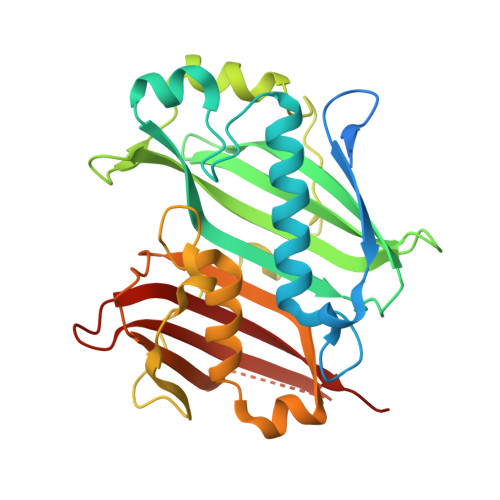Discovery and optimization of spirocyclic lactams that inhibit acyl-ACP thioesterase.
Asmus, E., Barber, D.M., Bojack, G., Bollenbach-Wahl, B., Brown, R.W., Doller, U., Freigang, J., Gatzweiler, E., Getachew, R., Heinemann, I., Hohmann, S., Ko, K.Y., Laber, B., Lange, G., Mattison, R.L., Minn, K., Muller, T., Petry, T., Reingruber, A.M., Schmutzler, D., Svejda, A., Frackenpohl, J.(2025) Pest Manag Sci 81: 2598-2616
- PubMed: 38334233
- DOI: https://doi.org/10.1002/ps.8015
- Primary Citation of Related Structures:
8QRT, 8QS0 - PubMed Abstract:
There are various methods to control weeds, that represent considerable challenges for farmers around the globe, although applying small molecular compounds is still the most effective and versatile technology to date. In the search for novel chemical entities with new modes-of-action that can control weeds displaying resistance, we have investigated two spirocyclic classes of acyl-ACP thioesterase inhibitors based on X-ray co-crystal structures and subsequent modelling studies. By exploiting scaffold-hopping and isostere concepts, we were able to identify new spirolactam-based lead structures showing promising activity in vivo against commercially important grass weeds in line with strong target affinity. The present work covers a series of novel herbicidal lead structures that contain a spirocyclic lactam as a structural key feature carrying ortho-substituted benzyl or heteroarylmethylene side chains. These new compounds show good acyl-ACP thioesterase inhibition in line with strong herbicidal activity. Glasshouse trials showed that the spirolactams outlined herein display promising control of grass-weed species in pre-emergence application combined with dose-response windows that enable partial selectivity in wheat and corn. Remarkably, some of the novel acyl-ACP thioesterase-inhibitors showed efficacy against resistant grass weeds such as Alopecurus myosuroides and Lolium spp. on competitive levels compared with commercial standards. © 2024 Society of Chemical Industry.
- Research & Development, Weed Control, Division Crop Science, Bayer AG, Industriepark Höchst, Frankfurt, Germany.
Organizational Affiliation:

















